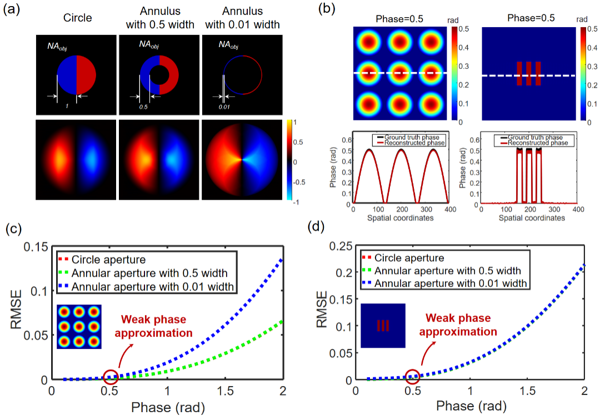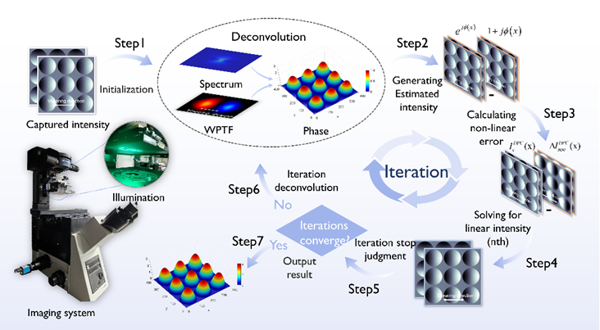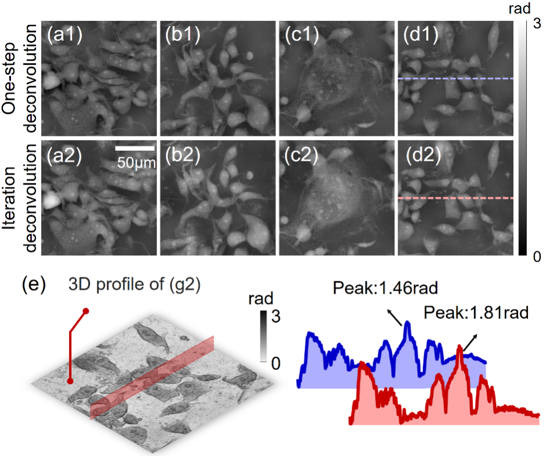In optical imaging, "phase" is one of the most important components of the light field (strictly speaking, monochromatic coherent light field). Especially in the field of optical microscopic imaging, most objects are phase objects with weak absorption, where the amplitude of light passing through the object (e.g., a cell) is almost constant, while the phase of transmitted light contains crucial information about the sample, such as 3D morphology and refractive index distribution. The acquisition of phase information is particularly significant, has driven the emergence of "phase measurement" technology. At present, "phase measurement" as a major research direction in the field of optical microscopic imaging, and has been widely applied in the fields of pathology, biological cytology and drug development.
Because of the invention of lasers, computers and charge-coupled devices (CCDs), classical phase measurement techniques are proposed based on the principle of interferometric imaging. It encodes invisible phase information into the interference fringe by superimposing additional coherent reference beams and the original object beam, and demodulates quantitative phase information of the sample by combining algorithms such as fringe analysis, numerical propagation and phase unwrapping. This technique provides reliable optical metrology for accurate measurement of samples' phase and enables precise quantitative observation of transparent samples. However, interferometric phase measurement has not been widely used in microscopic imaging because it is highly susceptible to scattering noise and it requires a highly coherent illumination source and a precisely calibrated interferometric optical path.
Quantitative phase imaging (QPI) under partially coherent illumination (transport of intensity equation, differential phase contrast) opens up new possibilities for higher quality "non-interferometric" phase measurements. It has the advantages of robustness, simple and easy-to-implement imaging configuration, imaging algorithm without phase unwrapping and higher lateral/axial resolution of imaging results. However, unlike the linear relationship between object distribution and complex amplitude in interferometric imaging, the intensity and object transmission under partially coherent imaging is "bilinear", which makes it impossible to establish the intensity-phase solution mechanism directly.
Typically, QPI techniques under partially coherent imaging require the introduction of a weak object approximation model to linearize the intensity distribution and then establish an explicit expression of the acquired intensity and object phase so as to derive a phase inversion algorithm. However, the introduction of weak-object approximation models brings convenience while also leading to the inherent drawbacks of such techniques: 1) weak-object approximation models are described as qualitative, vague "objects with small phases" that lack a clear physical or mathematical definition; 2) the imaging performance of the QPI algorithms is limited by how well the real sample matches the approximation model. These two limitations result in QPI losing its proudest "quantitative" properties and no longer providing credible evidence for subsequent analyses such as cell morphology and cell mass measurement.
To solve the above problems, the group of Prof. Qian Chen and Chao Zuo from Nanjing University of Science and Technology has carried out exploratory work on the "quantitative nature" of partially coherent QPI, giving the first strict numerical definition of weak object approximation and proposing an iterative deconvolution algorithm based on the pseudo-weak object approximation model. The algorithm achieves accurate QPI without any additional data, extending the applicability of DPC QPI from weak-phase objects to large-phase objects. The relevant research results were published in Photonics Research, Volume 11, No. 3, 2023 (Yao Fan, Jiasong Sun, Yefeng Shu, Zeyu Zhang, Qian Chen, Chao Zuo. Accurate quantitative phase imaging by differential phase contrast with partially coherent illumination: beyond weak object approximation[J]. Photonics Research, 2023, 11(3): 442).
To address the problem that the weak object approximation lacks a clear physical or mathematical definition, the researchers analyzed the intensity generation model under partially coherent imaging and found that the weak object approximation is an approximate model for the observed sample, but the nonlinear intensity error under this approximation is affected by the object phase distribution and the illumination aperture. This implies that both factors need to be considered to determine a strict definition of the weak object approximation. To obtain a rigorous definition of the weak object approximation, the researchers imposed the abrupt object as well as the annular illumination aperture constraint to produce the maximum nonlinear intensity error and determined the first strict mathematical definition of the weak object approximation through numerical simulations. This conclusion offers a theoretical explanation of the conditions that need to be met for the "quantitative" nature of quantitative phase imaging and a theoretical basis for measuring the accuracy of phase reconstruction.

Figure 1 Numerical simulation results with variable phase to determine the definition of the strict weak object approximation. (a) Illumination apertures and their corresponding WPTFs. (b) The reconstructed phase of a microlens array and a sharply varying step with a phase value of 0.5rad. (c), (d) RMSE curves for the reconstructed phase of a microlens array and a sharply varying step with increasing phase values under different illumination apertures.
Furthermore, to break the limitation that the weak object approximation is difficult to be applied to large phase samples, the group introduced the pseudo-weak object approximation model into optical microscopy. The pseudo-weak object approximation was first proposed by Fanghua Li in 1982, which firstly elucidated the relationship between image intensity and crystal thickness, revealed the variation law of image intensity for atoms with different weights, and extended the interpretation of the contrast degree of high-resolution electron microscope images to a much more tolerable thickness than the weak-phase object approximation. Different from the single-layer phase distribution under traditional weak object approximation, pseudo-weak object approximation describes the large phase object as a superposition of a multilayer weak phase structure, which could be seen as a more accurate model.
Based on this model, the phase reconstruction is no longer achieved through a direct deconvolution algorithm, but by solving an optimization problem that needs iterative reconstruction. The basic idea of the algorithm can be described as: the nonlinear components in the intensity are continuously eliminated by the intensity difference between Abbe's model and the transfer function model. The ideal linear distribution is approached by the intensity used in deconvolution reconstruction to realize the update and refinement of the quantitative phase. This algorithm can achieve accurate quantitative phase reconstruction of large phase objects without additional data acquisition, breaking through the limitation of weak object approximation and extending the partial coherent quantitative phase imaging algorithm to large phase objects.

Figure 2 Algorithm flow chart of the iterative deconvolution reconstruction.
The accurate QPI capability of the iterative deconvolution algorithm was validated in the observation experiment of MCF-7 human breast cancer cells, and the results are shown in Figure 4. Compared to the traditional one-step deconvolution algorithm, one-step deconvolution (blue curve) provides too small cell morphological features, and iterative deconvolution (red curve) accurately recovers quantitative features of the sample, demonstrating its accurate 3D morphological data. The results show that the technique provides more accurate 3D morphological data of cells, which is expected to provide an effective technical solution for early cancer diagnosis and treatment.

Figure 3 Experiment results on MCF-7 human breast cancer cells. (a1)–(d1), (a2)–(d2) Enlarged images of the four ROIs under one-step deconvolution and iterative deconvolution. (e) 3D display of reconstruction results and the quantitative phase profiles.
The quantitative definition of the weak object approximation provides a basis for measuring the reconstructed phase accuracy of the DPC technique, the researchers of the group said. The proposed iterative deconvolution extends the range of applicable objects for DPC and obtains more accurate 3D morphological data of cells, which is expected to be an effective technical solution for early cancer diagnosis and treatment. In the future, the research group will conduct research on the biological application of this technology to realize the transition from technological innovation to practical application.


